The Best Fluffy Pancakes recipe you will fall in love with. Full of tips and tricks to help you make the best pancakes.

Meet Henry Fonda, aka “One-Take Fonda,” the guy who always nailed his scenes in Hollywood. But there’s more to him than meets the eye. Sure, he had that smooth charm that could win over anyone, but he also had a dark side. His five wives and kids felt the sting of his cold and ruthless behavior. One marriage even ended in tragedy with a suicide. The Fonda family kept quiet about it all until after Henry passed away. Then, the truth came out…
A Traumatized Star Is Born
Henry Jaynes Fonda, born in Nebraska way back in 1905, had a pretty unusual childhood. His folks were big into Christian Science, which meant no doctors for them. Growing up in the Fonda household was like living in a mix of strict rules and quirky beliefs. And all that stuff rubbed off on young Henry, shaping him into the person he’d become.
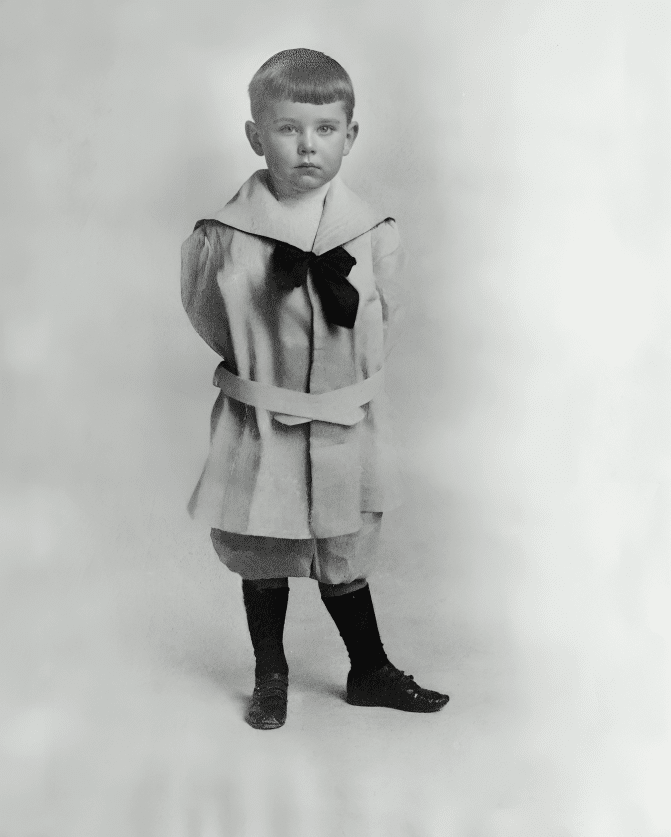
Now, despite being a bit shy and not exactly the tallest guy around, Henry was a total champ at sports like skating, swimming, and running. But he kept his feelings under lock and key when it came to girls. This emotional lockdown caused some serious trouble later on in his life. When he was just 14, he witnessed a major event that haunted him forever.
Horrific Scenes For a Child to See
Back in 1919, Henry and his dad got caught up in something crazy called the Omaha Race Riot. It all started when the local newspapers stirred up a bunch of trouble by reporting an attack on a girl by a black guy. Then, a mob of angry white folks lynched an African American man named Will Brown. Seeing that awful scene really shook Henry to his core. It made him super passionate about fighting against unfairness and racism for the rest of his life.

Years later, he told the BBC about the horrific sight: “I’ll never forget it. A young black guy is hanging lifeless from a rope. It made me sweat and cry just thinking about it.” That messed-up event, along with his strange childhood and other tough stuff he went through, definitely stirred up Henry’s personality, making him a bit of a wild card as he went through life.
Everyone Thought He Was a Late Bloomer
By the time he finished high school, Henry had shot up to over six feet tall, but he was still shy. He headed off to the University of Minnesota, hoping to become a journalist, but he didn’t quite make it to graduation. So, instead, he ended up working part-time at his dad’s printing press, dreaming of being in a newsroom.

But then something unexpected happened… When Henry was 20, Marlon Brando’s mom, Dodie Brando, pushed him onto the stage. She thought he’d be good in a play and was right! He got the part of Ricky and started hanging out at the Omaha Community Playhouse. There, he learned everything about acting, from how to speak dramatically to how to design sets. Little did he know that random meetings would change his life forever.
ADVERTISEMENT
Dealing With the Ghosts of His Past
From the very start, Fonda’s prodigious talent was glaringly apparent. But, a colossal obstacle stood in his way – the deep-seated impact of his childhood issues. He was a cauldron of self-contempt, mortified by his own theatrical prowess. However, when he bagged the lead role in a play, it dawned upon him – acting was his perfect disguise, a refuge for his awkward, tongue-tied persona. This realization was a turning point, transforming his life in unimaginable ways.
Editorial content

In 1928, Fonda, brimming with the confidence of a born star, transformed his shortcomings into his might by immersing himself completely into his roles, using the character’s persona as his shield. He packed his bags and joined the University Players in Massachusetts, where he began to receive more substantial roles. As his fame skyrocketed, his personal life began to sizzle with the same intensity, adding a dash of spice to his already exciting journey.
Toxic Marriage to Margaret Sullivan
Fonda was head over heels for Margaret Sullavan, a lively gal from the East Coast who popped the question to him. Their relationship was a wild ride, full of ups and downs, like a rollercoaster. They were total opposites—Fonda kept his feelings bottled up tight, while Margaret was all fire and brimstone.

Despite their differences, Henry and Margaret got hitched on a snowy Christmas Day in 1931. He was a grown-up 26-year-old, and she was just barely out of her teens but full of life. But the honeymoon phase didn’t last long. One night, Margaret refused to pitch in for fireworks on July 4th, and Henry made a snarky comment. Margaret wasn’t having it and poured a pitcher of ice water over him! Henry didn’t even flinch, thanks to his tough upbringing.
The Marriage Lasted 2 Months
Fonda really liked Margaret, and they wanted to make their relationship work no matter what. So, Henry decided to move to New York City to be with her and find a job there. But even though they tried hard and never gave up, their happy marriage only lasted two months.

Fonda and Margaret were in love and ready to fight for their relationship despite whatever bad luck might come their way. Henry moved to New York to be with Margaret and find work. But no matter how much they tried, their happiness lasted only two months.
“The Lady Killers”
After Fonda split from his wife in 1933, things got interesting when his old buddy James Stewart showed up in New York. They didn’t just share an apartment—they were partners in crime, known for wooing ladies left and right. Their adventures together became the stuff of legends.

Then, in 1935, they ditched the city life for Hollywood. Fonda finally hit the jackpot in Tinseltown that same year. Hanging out with the lovely Carole Lombard, they enjoyed good food and wine. And guess what? They lived next door to the mysterious Greta Garbo! It was quite an adventure.
His Time On “I Love Lucy”
Henry Fonda, a real heartthrob back in the day, had a short fling with the feisty Lucille Ball, the famous redhead. They were both up-and-coming stars and got caught up in a whirlwind romance. One night, they went on a fun double date with Jimmy Stewart and Ginger Rogers, and Henry and Lucy fell for each other. But the next morning, when Henry saw Lucy without her stage makeup, he blurted out a shocked “Yuck!”
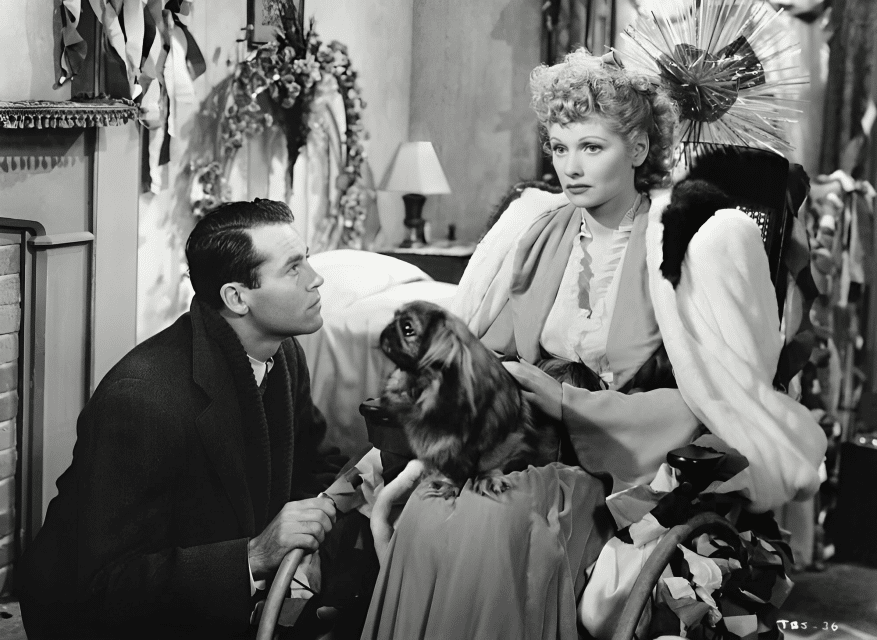
Years later, Henry joked with Lucy’s husband, Desi Arnaz, saying, “If I hadn’t said ‘Yuck,’ maybe the studio would’ve been called ‘Henrylu’ instead of ‘Desilu’!” It turns out that Henry and Lucy were actually distant cousins, like eighth cousins! Talk about a surprising twist!
Henry and Frances For Seymour Become an Item
Henry didn’t seem to learn from his first marriage mistake when he fell head over heels for the glamorous but fragile Frances Ford Seymour. They met in England while shooting a movie in 1937. Even though Frances was still grieving her rich husband’s death, they rushed into marriage. Once again, Henry, emotionally distant, got involved with a vulnerable woman.
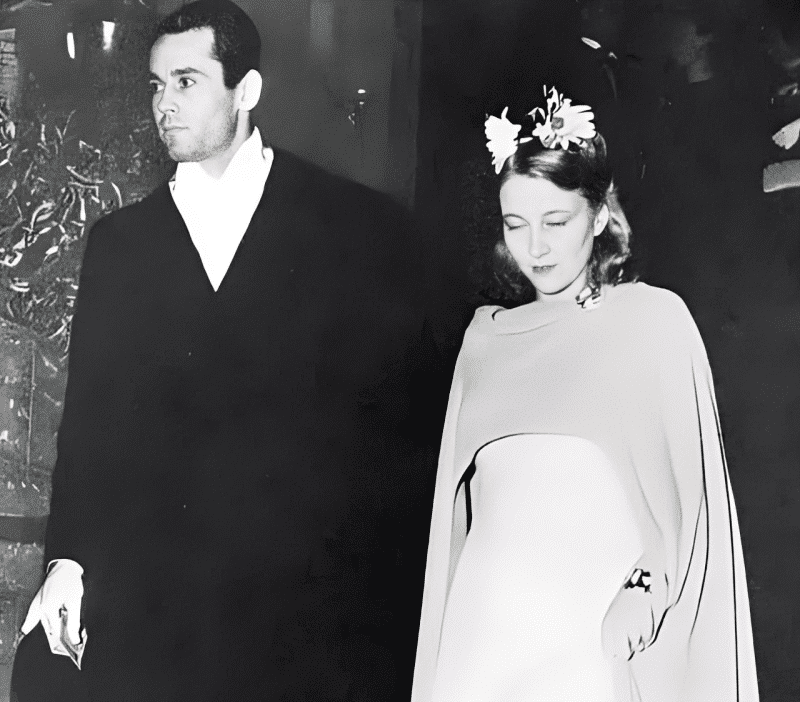
Despite their obvious differences and Frances already struggling as a single mom, they had two famous kids—Jane and Peter Fonda! Henry tried to be a good dad, even pausing his acting career in 1938 to see Jane being born. But, hoping fatherhood would change his wandering eye? That was just wishful thinking!
A Hollywood Legend
During his wild Hollywood days, Fonda went from being a new guy to a big shot in the movie business. He scored some major roles, like playing Frank James in 1939 and Abraham Lincoln in the same year. He even beat out Tyrone Power for a part in John Ford’s 1940 movie and got nominated for an Oscar! But just when things were going great, big changes were coming.
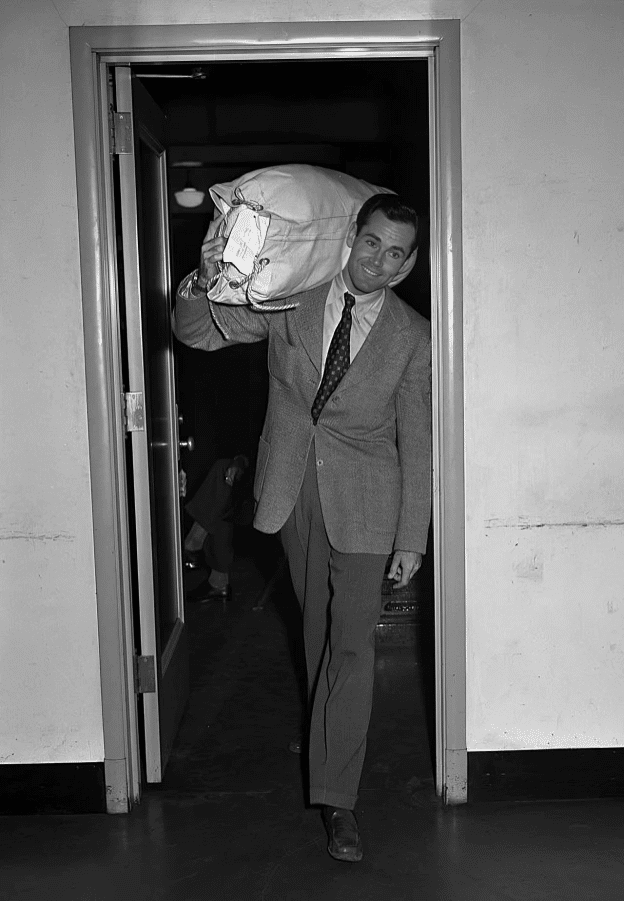
Even the famous folks in Hollywood couldn’t ignore what was happening in Europe during World War II. Jimmy Stewart, the superstar of the silver screen, was the first to trade his fancy clothes for a military uniform and join the US Army. He became a brave pilot fighting against the Nazis. Inspired by Stewart’s courage, Fonda said goodbye to his family and got ready to join the fight too.
Henry Was a Soldier in WW2
Henry wasn’t about to sit around and pretend to fight in a studio! He said, “I don’t want to act in a fake war.” Instead, he spent three exciting years on the USS Satterlee as a Quartermaster 3rd Class. He was so brave and smart that he got promoted to Lieutenant Junior Grade in Air Combat Intelligence in the Pacific. He even got a fancy Bronze Star Medal! Even after he left, he couldn’t resist, so he served another three years in the Naval Reserve.
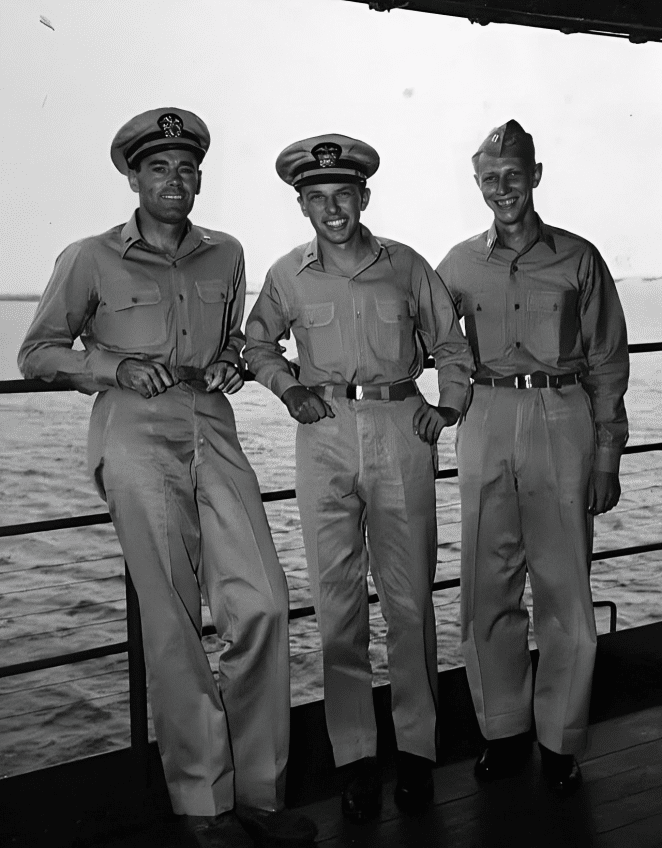
When Henry came back from fighting in WWII, he was a different guy. He ditched the stage and enjoyed hanging out with famous Hollywood people, loving the freedom of civilian life. But when he was alone, he turned into a cold, distant person, still haunted by the war. His family felt the brunt of it, dealing with his explosive temper and scary outbursts, especially when he thought they were demanding too much from him.
His Many Escapades
Even though Fonda was married with kids, he had a reputation for having many flings. But the crazy thing is, he turned down some really tempting offers. For example, in 1947, he worked with the glamorous Joan Crawford. She was totally taken with him, so she devised a wild idea. She gave him a flashy red-sequin jockstrap as a gift, all wrapped up nicely, just for him.
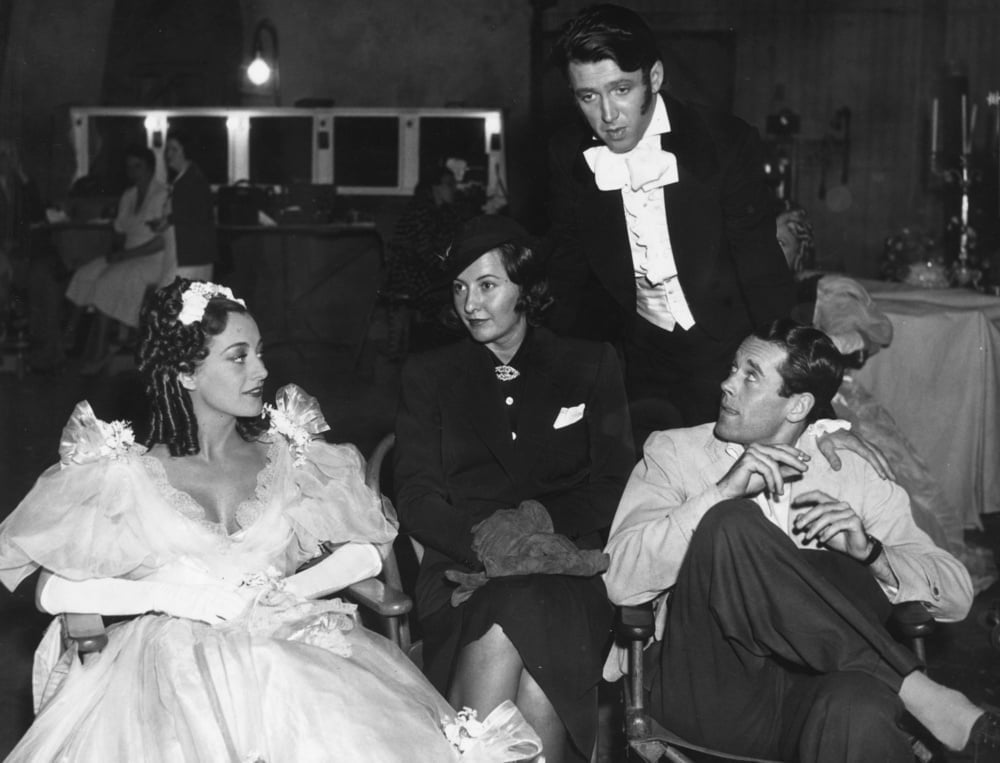
But even though Crawford went all out, Fonda didn’t budge. So, she got even more creative. While they were filming a scene where he had to carry her up some stairs, she saw her chance. She whispered in his ear, asking him to model the jockstrap for her in private. Fonda later said, “I almost dropped her when she said that!”
Not the Best Father Figure
In his super interesting autobiography from 1998, Peter Fonda talked about his dad, Henry, who was emotionally distant. He remembered how quiet and cold things got at family dinners. His dad had a weird way of showing love—through getting angry. It wasn’t until Henry got older that Peter finally heard those three magic words: “I love you, son.”
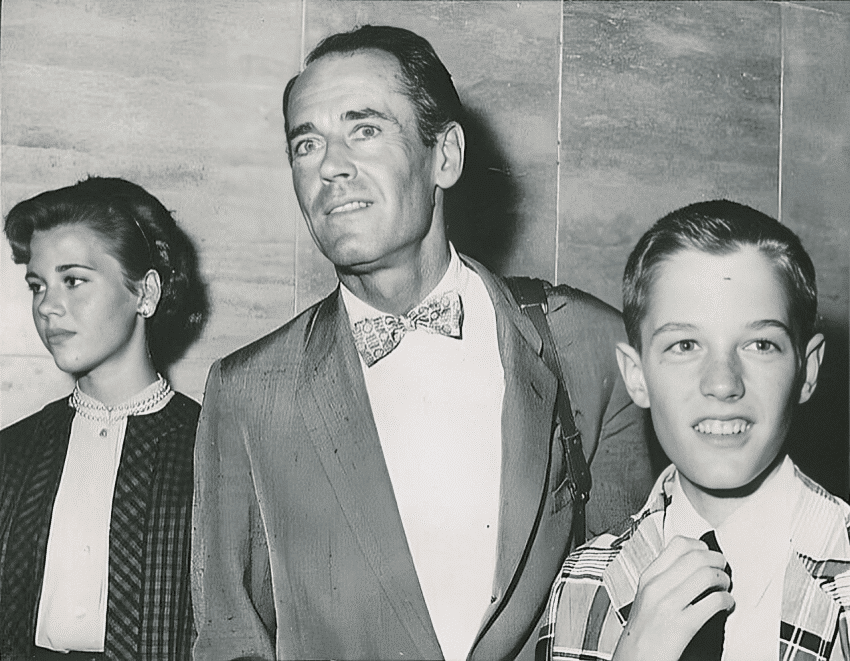
Jane, Henry’s daughter, had similar feelings. She felt like her dad, Henry, was emotionally distant, too. He made her believe that love only came with perfection, which messed her up and led her to struggle with bulimia. Growing up, she felt like she had to always make everyone happy. But Henry’s not-so-great parenting skills didn’t end there; he wasn’t exactly the best husband either.
The Marriage Was Over
Henry’s life was like a sad song, especially with Frances, who was struggling with bipolar disorder. But Henry wasn’t perfect either; he was pretty focused on himself, which made things even harder for Frances. And then came the big shock: Henry started a secret romance with Susan Blanchard, who was much younger than him. This was the last straw for Frances, and it sent her into a really dark place.
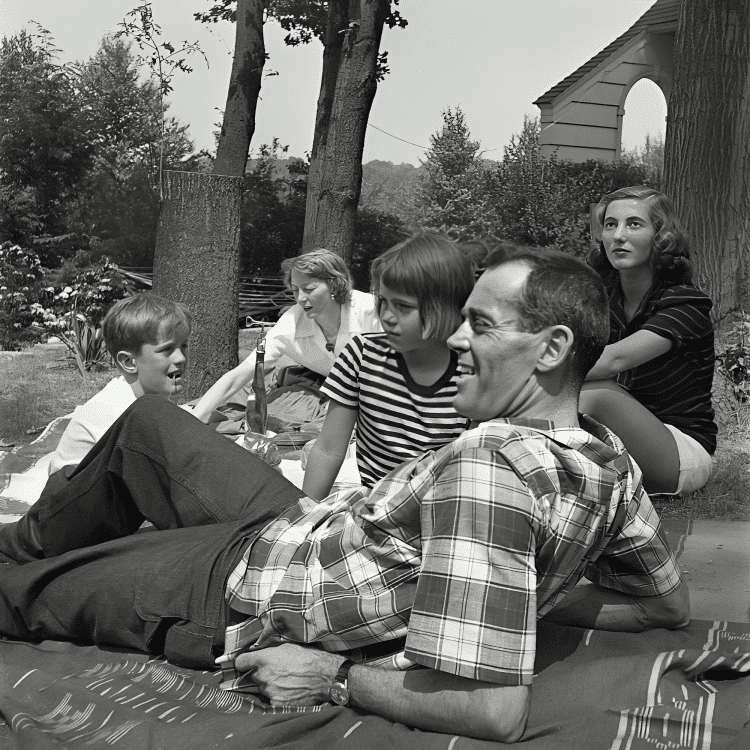
After being married for 13 years and having two kids together, Henry dropped a bombshell on Frances in 1949: he wanted a divorce. He didn’t sugarcoat it; he straight-up told her he would marry his new girlfriend. Devastated by her husband’s betrayal, Frances went to the Austen Riggs Psychiatric Hospital in Massachusetts to get some space. Henry tried to protect Jane and Peter from the truth, telling them their mom had just “gone away.”
Frances Ended Her Own Life
For months, Dr. Margaret Gibson, a really smart psychiatrist, worked hard to help Frances deal with all the pain caused by her mean husband. But sadly, nothing seemed to help. Then, on April 14th, 1950, just after turning 42, Frances tragically took her own life. She left six sad notes, but none were for Henry. As we’ll soon find out, Dr. Gibson has uncovered the real truth about Frances’s struggles.
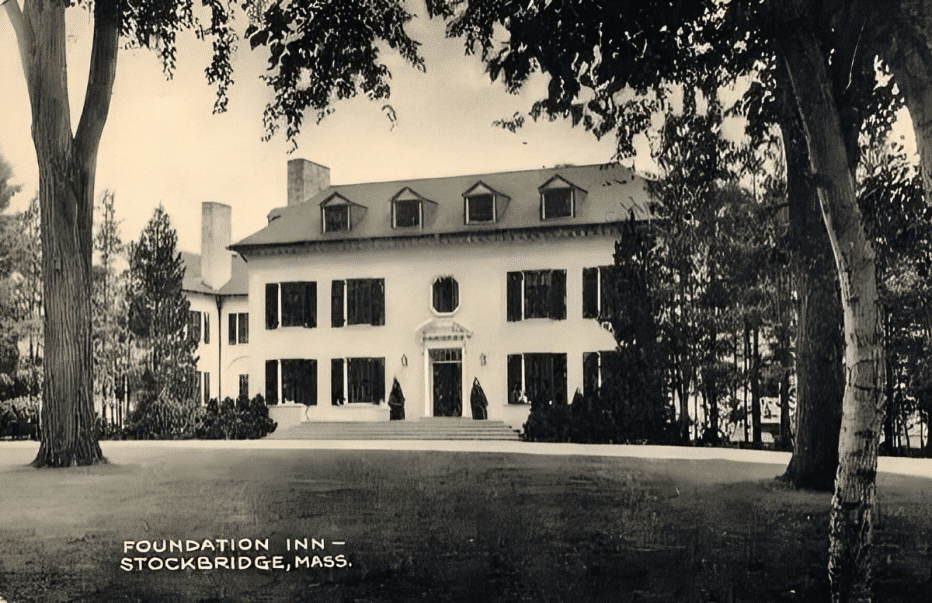
Jane and Peter, who were just twelve and ten, were hit hard when their mom, Frances, ended her own life. But instead of telling them the truth, their dad, Henry, made up a terrible lie, saying Frances died from heart failure. Maybe he thought he was protecting them or trying to avoid blame, but what he did next was really unforgivable.
Always in Control
Fonda escalated his web of deceit about Frances’ demise to a startling new height. To maintain the fabricated tale that his wife’s heart simply stopped beating, he audaciously barred Jane and Peter from attending their own mother’s funeral. He orchestrated a hushed, makeshift ceremony in a hasty bid to bury the tragic saga. The guest list was exclusive, featuring only Fonda himself and his mother-in-law, Sophie Seymour. But hold on, the story takes an even darker turn!
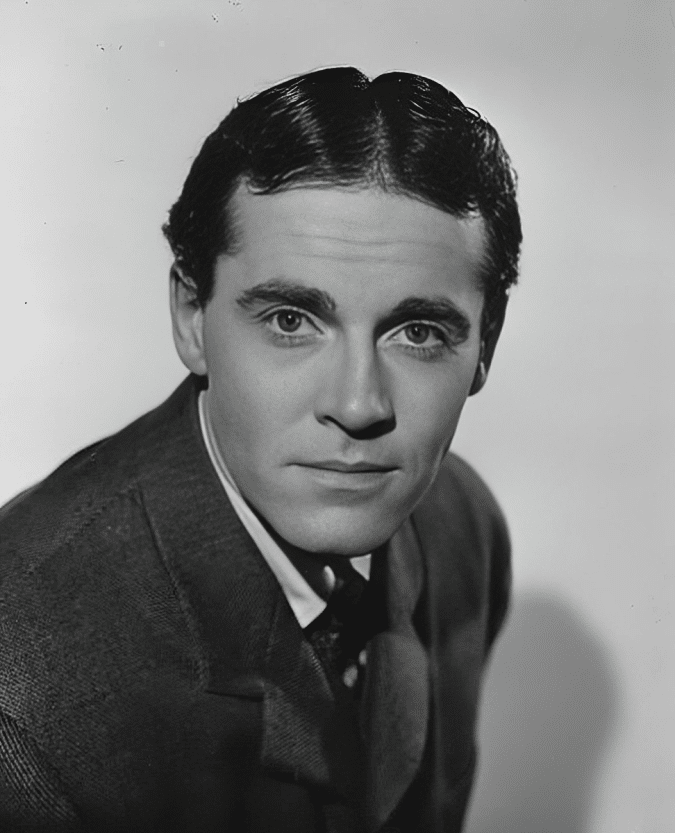
In a desperate bid to cloak the bitter truth from his offspring, Henry eradicated all traces of newspapers and magazines from their residence, fearing they might discover their mother’s tragic suicide. But even the most colossal efforts can’t suppress the truth indefinitely. Jane, the unsuspecting child, stumbled upon the heartbreaking reality of her mother’s demise, hidden within the pages of a school magazine.
Frances Ford Seymour Found Her Revenge
Fonda took his lies about what happened to Frances to a whole new level. He didn’t want anyone to know the truth about her death, so he didn’t let Jane and Peter go to their own mom’s funeral. Instead, he arranged a quiet ceremony with just him and Frances’ mom, Sophie Seymour. But wait, it gets even worse…
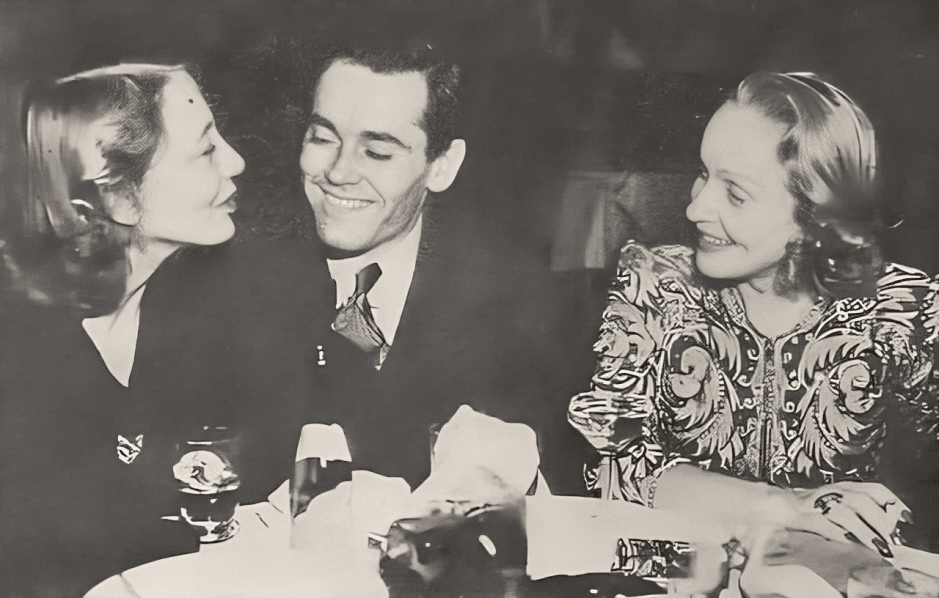
To keep Jane and Peter from finding out what really happened, Henry got rid of any newspapers or magazines in their house that might mention their mom’s suicide. But even with all his efforts, the truth eventually came out. Jane discovered the sad truth when she read an article about her mom in a school magazine.
His Marriage to Susan Blanchard
In a pretty self-centered move, Fonda got married to his 21-year-old girlfriend, Susan Blanchard, not long after his wife’s sad suicide. By 1953, they even adopted a little girl named Amy Fishman, joining Jane and Peter. But their family life wasn’t all sunshine and rainbows.
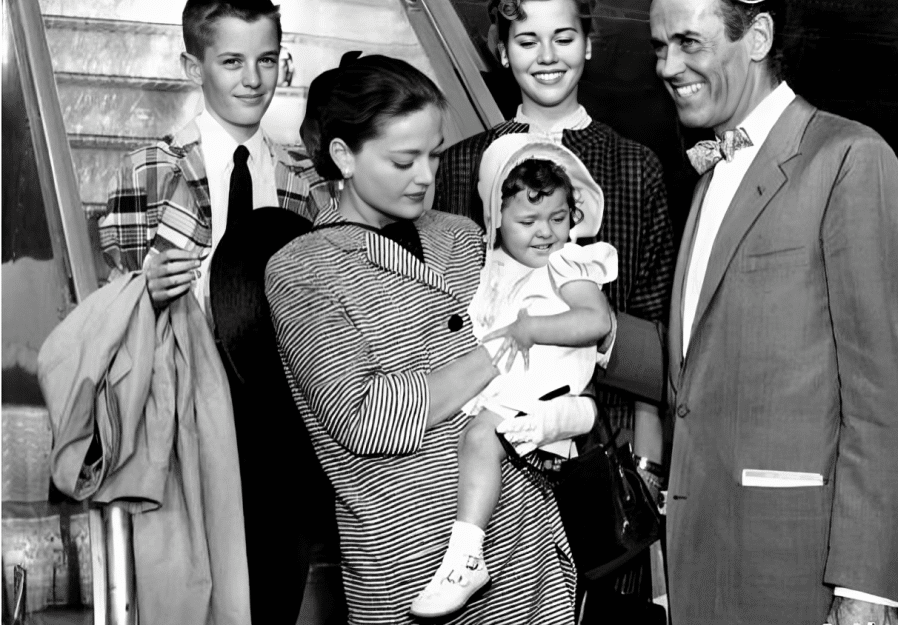
As Susan approached Fonda, she told some troubling stories about him. She described him as someone who wanted a “geisha” wife, always looking perfect, doing whatever he said, and always trying to make him happy. Sound familiar? Jane Fonda called this the “disease to please.” By 1956, their rocky marriage fell apart, and Fonda’s once-great career was starting to fall apart, too.
Looking For Trouble
In 1955, Fonda got caught up in an intense and upsetting fight. He had been working with famous director John Ford for a long time, making many great movies together. Ford wanted Fonda, who was 49 then, to star in his new World War II movie, even picking him over big names like Marlon Brando and William Holden.
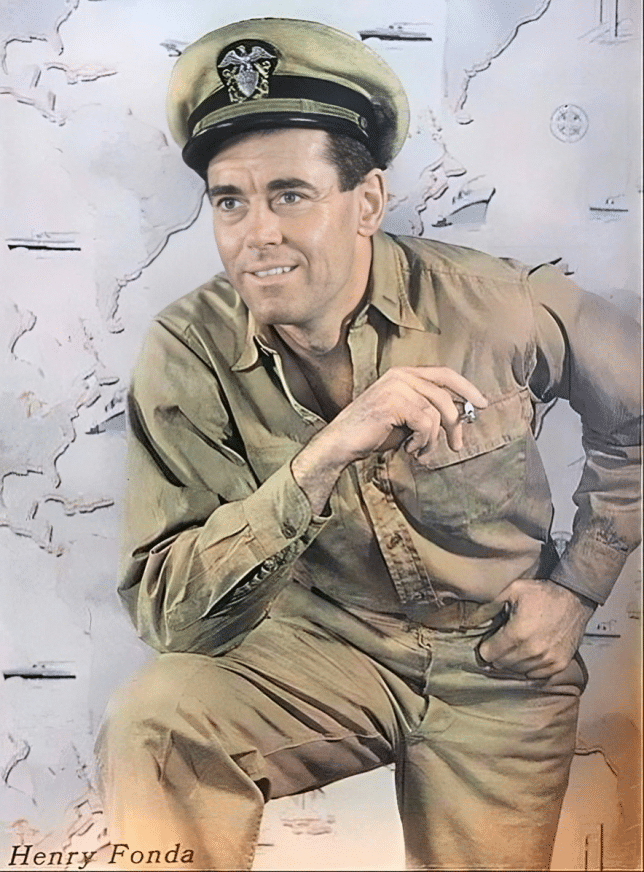
But when they started filming, it was clear that Ford was looking for trouble. He clashed with both Fonda and James Cagney, who called him a “mean old man.” Things got really bad when Ford actually punched Fonda in the face during an argument. Even though Ford said sorry, Fonda ended their friendship and working relationship, which was a big deal and marked the end of Ford’s career.
Marrying Italian Aristocracy
In 1956, Henry Fonda was going through a tough time. He had been married and divorced three times already, and now he was splitting up with Susan. But then he found comfort in the arms of Afdera Franchetti, an amazing Italian Baroness. He met her through Audrey Hepburn while they were filming in Italy. Even though Afdera was only 25 and barely older than his daughter Jane, they married when Henry was 51.
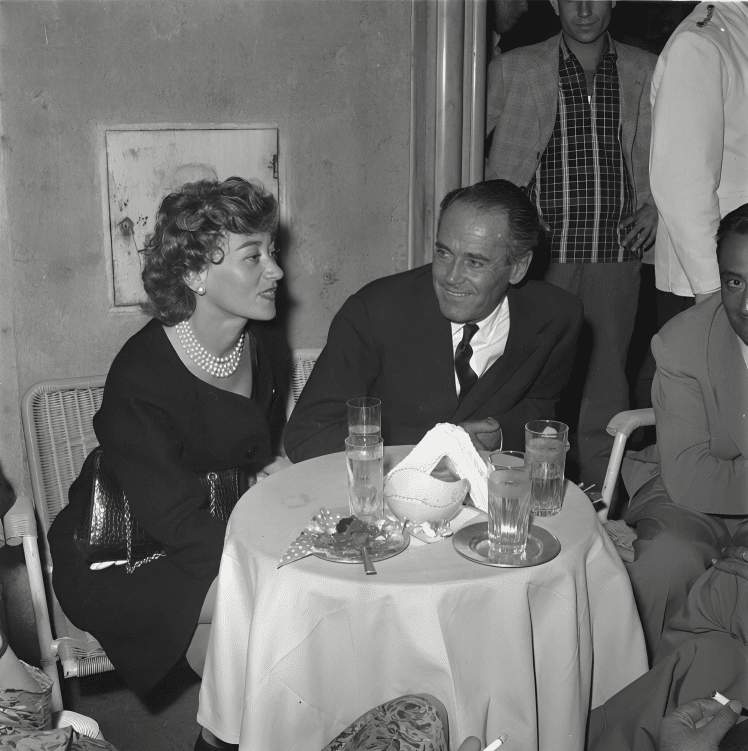
Then, in 1957, Henry Fonda did something really incredible. He played a character called “Juror 8” in a movie by Sidney Lumet that people still talk about today. He was the guy who convinced the whole jury to say “not guilty” with a lot of passion. Even though the movie is a classic now, it didn’t do well in theaters at first. This made Henry really sad because he had helped make the movie, and he decided he didn’t want to produce any more movies after that.

